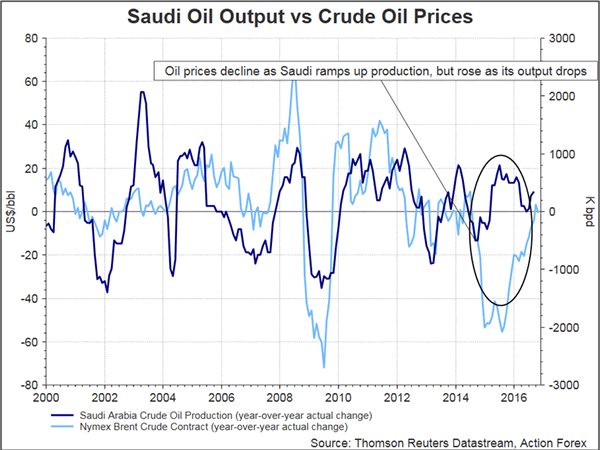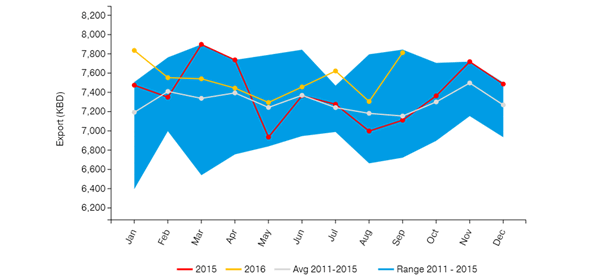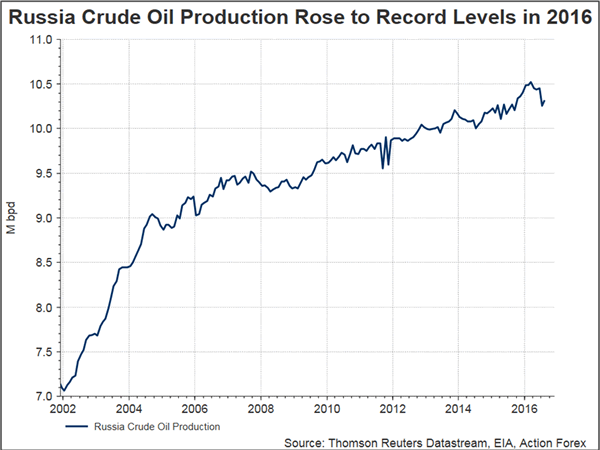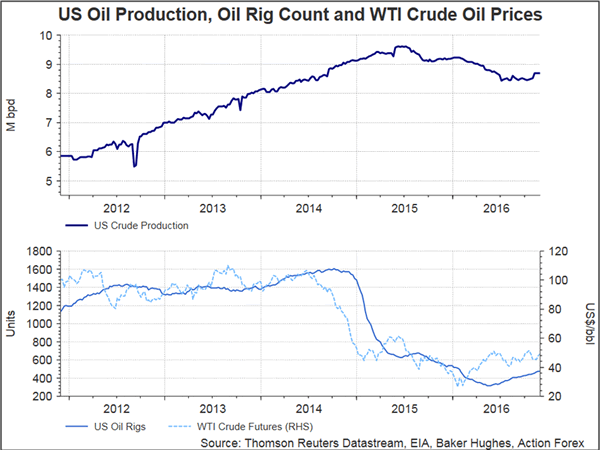To the market’s surprise, OPEC announced to cut production to 32.5M bpd, the lower end of the target range indicated in the "Algiers Accord" in September. It also represents a -1.2M bpd, or -3.7%, reduction from October levels. Meanwhile, OPEC noted that non-OPEC countries have also agreed to cut output by -0.6M bpd with half of the contribution coming from Russia. Initial market reaction was buoyant with crude oil prices rallying the highest levels in a month. However, performance of commodity currencies under our coverage was not as robust as expected. Indeed, all of aussie, kiwi and loonie ended the day lower after initial rally, mainly due to a stronger US dollar. Higher oil prices as a result of output cut lift inflation expectations, lifting US dollar and Treasury yields.
Details of OPEC Agreement
Agreeing to cut output for the first time in 8 years, OPEC announced it would reduce output by about -1.2M bpd by January, making the aggregate production of the organization to 32.5M bpd, the lower end of the target range suggested in September. Saudi Arabia, the biggest producer in OPEC, would bear the biggest reduction and lower its output by -0.49M bpd to 10.06M bpd. Nigeria, Libya and Indonesia (OPEC membership suspended) are exempted from the plan, while Iran is allowed to produce at a maximum of 3.8M bpd. Iraq, however, is given its first quota since the 1990s and would cut output by -0.21M bpd from October level to 4.35M bpd.
Meanwhile, non-OPEC producers also agreed to lower output by -0.6M bpd with Russia saying it would cut by as much as -0.3M bpd "conditional on its technical abilities". Other non-OPEC countries deemed to participate include Oman, Azerbaijan, and Mexico. A deal would be formalized on December 9.
The plan would take effect on January 1, 2017 and is scheduled to last for 6 months initially. A monitoring committee will be established to monitor the implementation and compliance of the agreement. OPEC and non-OPEC producers would meet on May 25 to discuss whether to extend the plan for 6 more months.
| OPEC Output and Proposed Reduction | |||
| K bpd | Oct (OPEC) | Target | Adjustment |
| Algeria | 1089 | 1039 | -50 |
| Angola | 1751 | 1673 | -78 |
| Ecuador | 548 | 522 | -26 |
| Gabon | 202 | 193 | -9 |
| Indonesia | 722 | 700 | -22 |
| Iran | 3975 | 3797 | -178 |
| Iraq | 4561 | 4351 | -210 |
| Kuwait | 2838 | 2707 | -131 |
| Libya | 528 | 500 | -28 |
| Nigeria | 1628 | 1500 | -128 |
| Qatar | 648 | 618 | -30 |
| Saudi Arabia | 10544 | 10058 | -486 |
| UAE | 3013 | 2874 | -139 |
| Venezuela | 2067 | 1972 | -95 |
| Total | 34114 | 32504 | |
| Source: OPEC | |||
Uncertainty Remains
The market apparently welcomes the deal, exemplified in the rally in oil prices and energy shares. However, uncertainties remain. Indeed, execution of the plan is challenging, given OPEC’s notorious track record of exceeding output quotas. The plan is scheduled to last for 6 months with the option to extend for 6 more months. There is the possibility that production can return to October levels or above after the period. All these would increase the difficulty of rebalancing the demand/supply outlook.
Note that the plan only deals with production, not exports. With the plan effective in January 2017, OPEC producers might be tempted to increase production in December. This could raise inventory for future exports. Indeed, Saudi’s "compromise" to cut might only be driven by the temporary drop in demand and local refinery maintenance. Yet, exports have stayed at elevated levels. In September, the Kingdom’s oil exports rose to 7.81M bpd, the second highest level. It is expected that Saudi’s inventory would allow it to maintain exports of over 7.6M bpd in the coming year. In this case, we doubt if oil prices could rise meaningfully due to the so-called output cut deal.

Saudi Arabia’s Exports Rose to Second Highest on Record in September

Concerning non-OPEC producers, Russia is expected to reduce output but as much as 0.3M bpd next year. However, given the fact that the country has been producing at record levels over the past several months, a cut would mean a return to the still-elevated levels seen last year. The US has not participated in the deal. It has long been OPEC’s concern that US would ramp up production if oil prices return sustainably to US$50/bbl or above. There is a high likelihood of an increase in shale investment, should oil prices rise to US$55-60/bbl.















